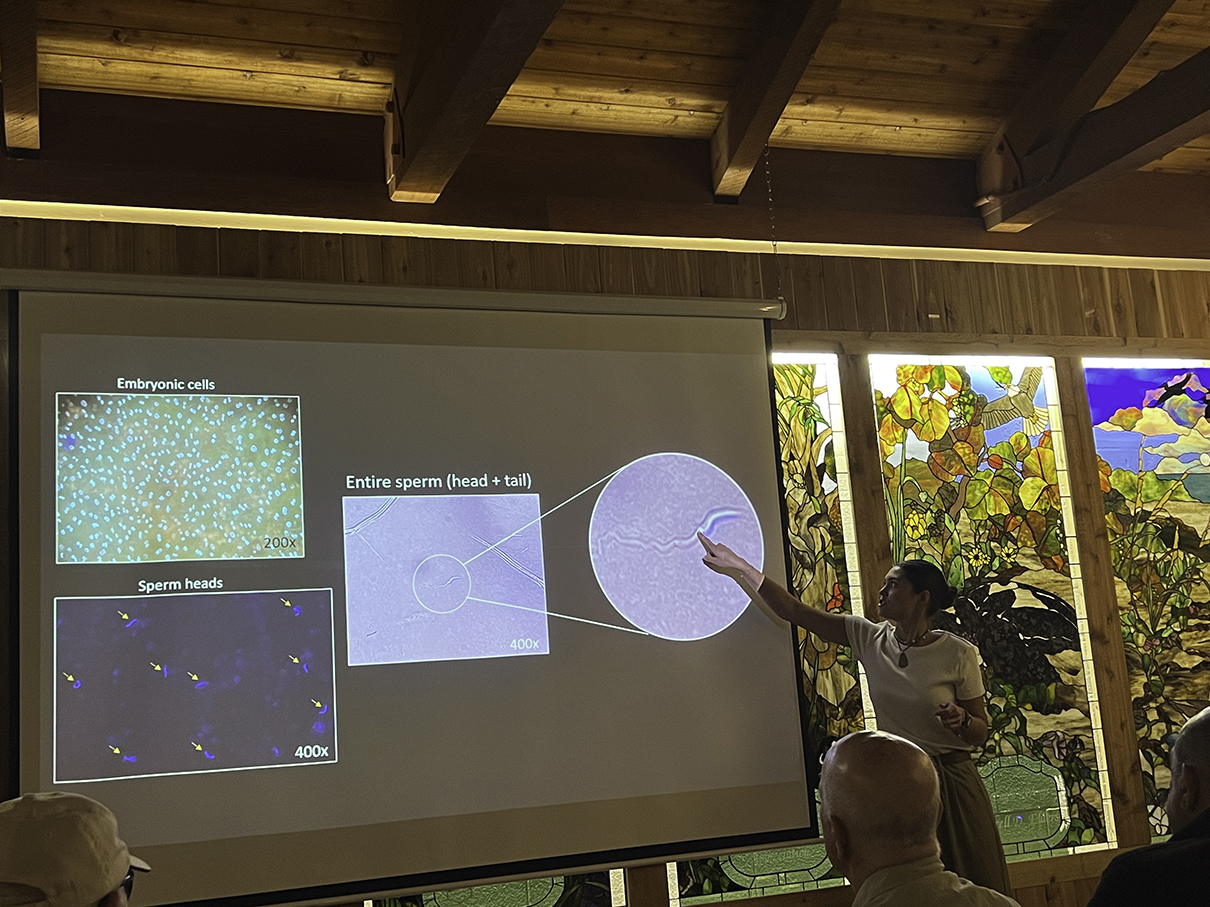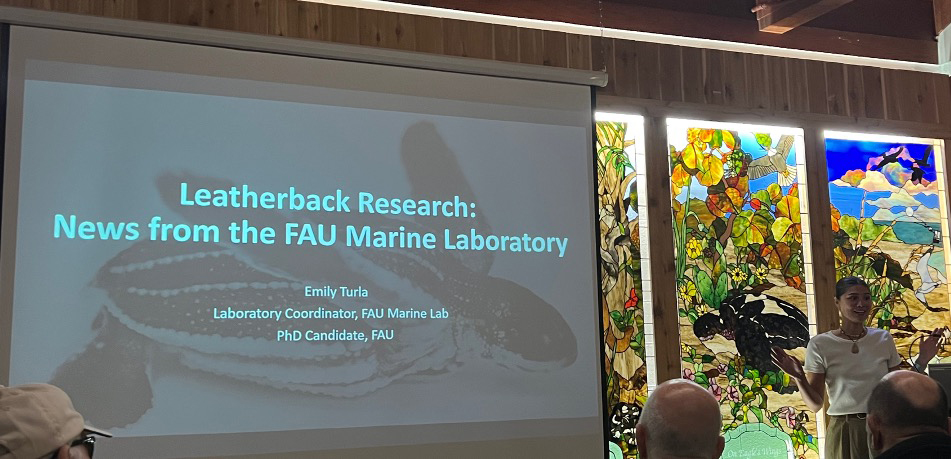
Author: Sam Trail
Date: January 23, 2025
The Gumbo Limbo Nature Center, our neighbor next door to the FAU Marine Lab, hosts a free, biweekly EcoWatch Lecture from January – April. Experts in their field present “the cutting edge of conservation” as they “share their work, research, and experiences, with a common goal for a more sustainable future.” On January 14th, FAU Marine Lab Coordinator and Ph.D. Candidate, Emily Turla, kicked off the lecture series talking about leatherback research at the FAU Marine Lab! She had a packed house of over 70 attendees! Read some of the highlights below.
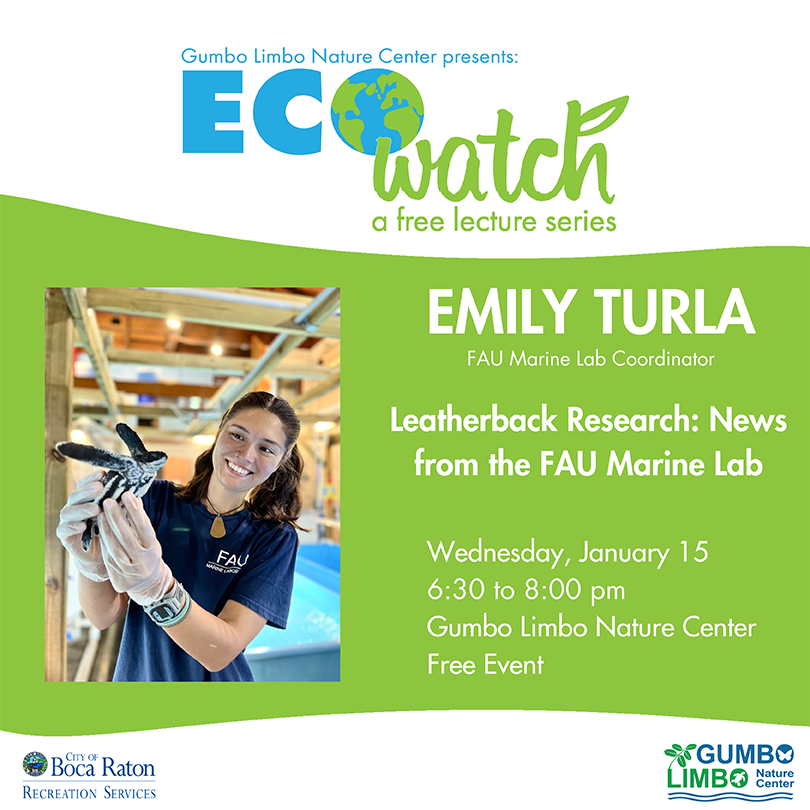
To set the scene for the ground-breaking research taking place at the FAU Marine Lab, Emily first covered the tremendous amount of care, time, and effort that goes into raising leatherbacks in a captive setting. Leatherbacks require tethers to keep the turtles from swimming into the sides of the tanks (they don’t recognize barriers). Water in those tanks must be chilled to mimic cooler offshore, pelagic waters. The seawater that comes to the lab from nearshore and pumped into our lab is warmer than offshore waters. And, a special low-calorie diet is provided 3x a day to meet the nutritional needs of these gelatinovores (exclusive consumers of prey like jellyfish and salps).
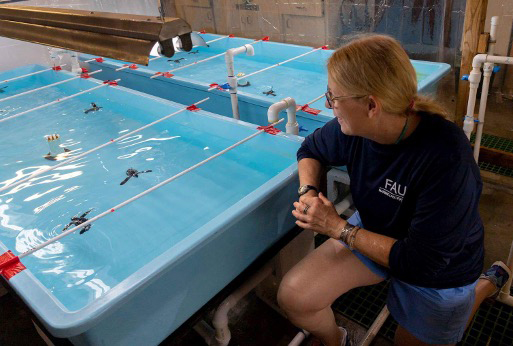
Caring for leatherbacks is unlike caring for any other species of sea turtle, and it comes with a hefty price tag of $1500 per turtle. Because of these limitations, the FAU Marine Lab is one of just two facilities in the world currently caring for leatherback sea turtles, making us uniquely equipped to answer questions about their biology, health, and behavior. For example, leatherbacks that are satellite tagged and released after their short stay with us travel along the Gulf Stream Current and have been recorded diving to depths up to 348 feet (about the length of a football field)!
Emily dove into her own Ph.D. research. She is focused on understanding what factors determine the hatching success of leatherback nests (or the lack thereof), which is generally lower than the hatching success of loggerhead and green turtle eggs, even though all three species share the same nesting beaches in southeast Florida. Over the 3 years that Emily has been collecting data, she has learned that in leatherbacks, many of the eggs that do not hatch perish early in development and show no sign of embryonic development. Why? Using a new method of fluorescent microscopy to assess fertility, Emily was able to eliminate one explanation: that the eggs were infertile. She determined that fertility rates were high even in those eggs exhibiting no signs of embryonic development. This suggests that for reasons yet to be determined, early-stage embryos fail to hatch. Her discovery should lead others to focus on why early embryonic mortality is so high in this species. For more details, read her paper on Page 6 of the July 2024 issue of Marine Turtle Newsletter.
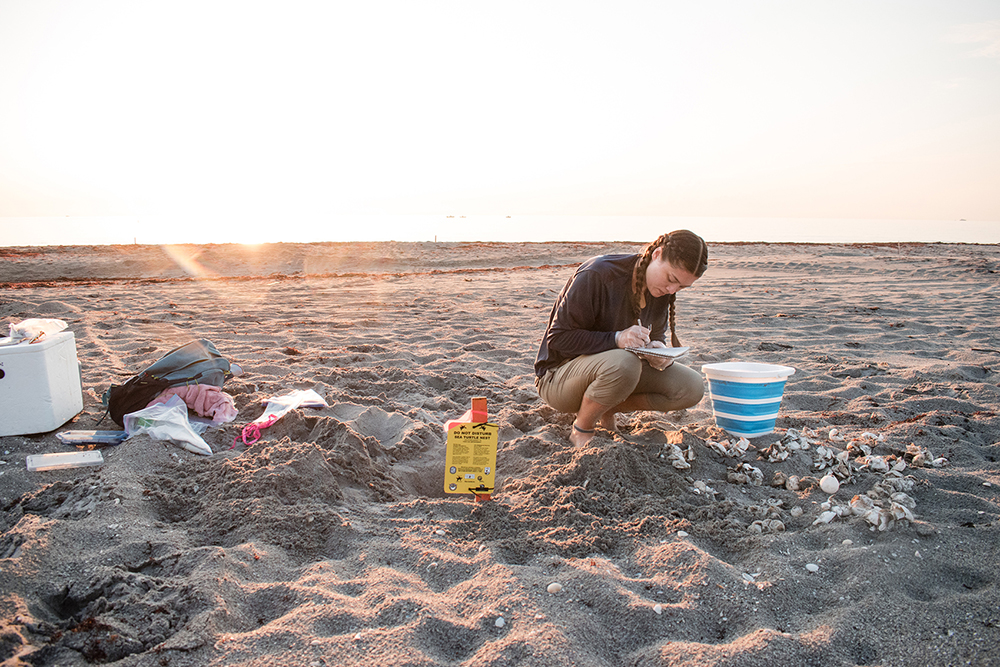
We had a chance to catch up with Emily for her perspective on the EcoWatch presentation and connecting with the community.
Although Emily suggests her research isn’t the “flashiest topic,” she said, “It inspires me to know that my research is of interest to the local community!” She continues, “Questions and comments from the attendees confirmed that it is important, worth investigating, and actually piqued people’s interest.”
When asked what she hopes her audience took away from her presentation, Emily stressed, “There is still a lot of basic science that needs to be done to improve our understanding about sea turtle biology.” Among the other questions she brought up were the following:
Aside from what she hopes her audience now understands about leatherback sea turtles, Emily also hopes, more broadly, that her audience “came to an understanding that science is always evolving, and we are always learning new things.”
Way to go, Emily! If you are interested in attending future EcoWatch lectures, find this year’s lineup of speakers here.
